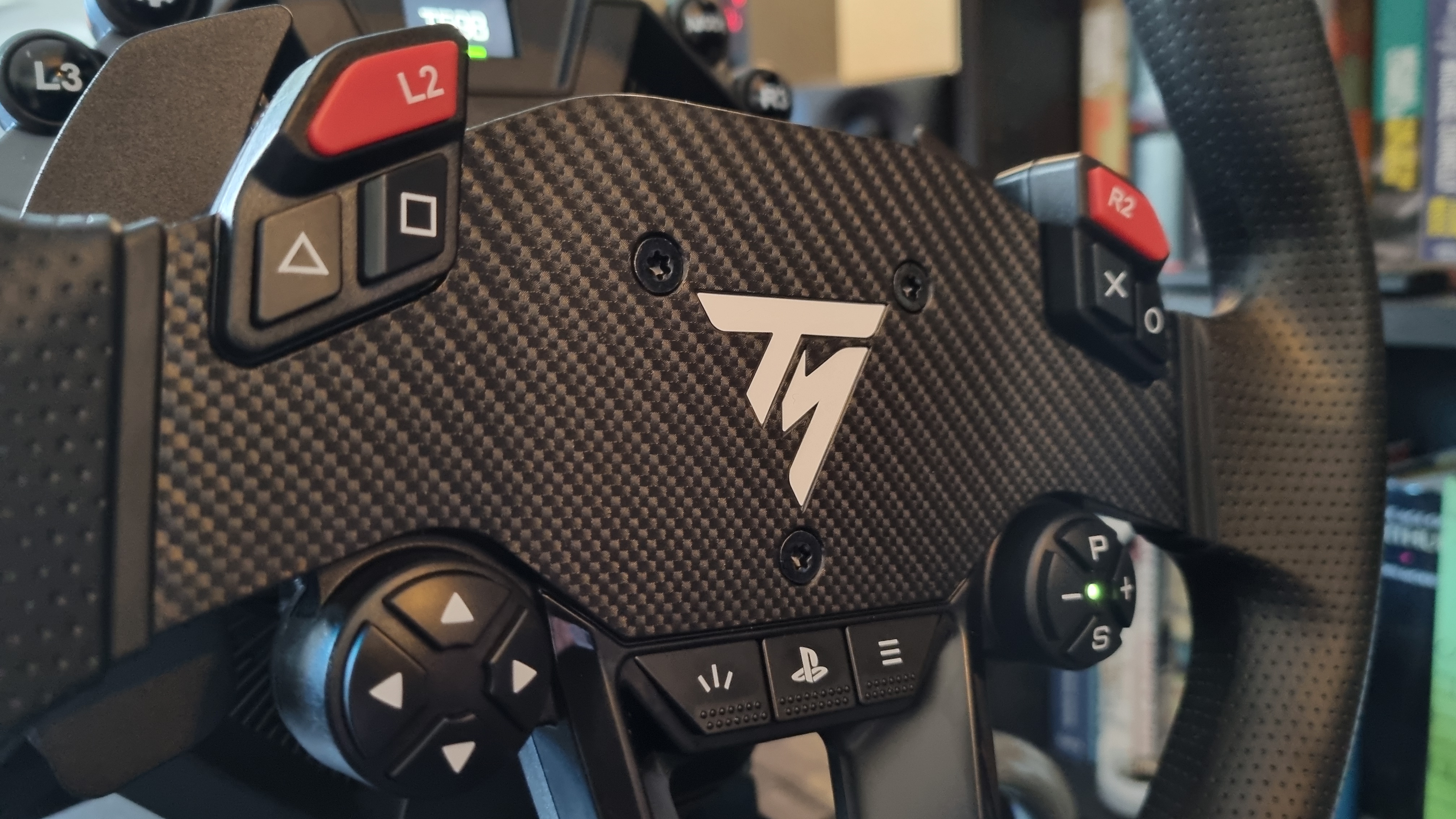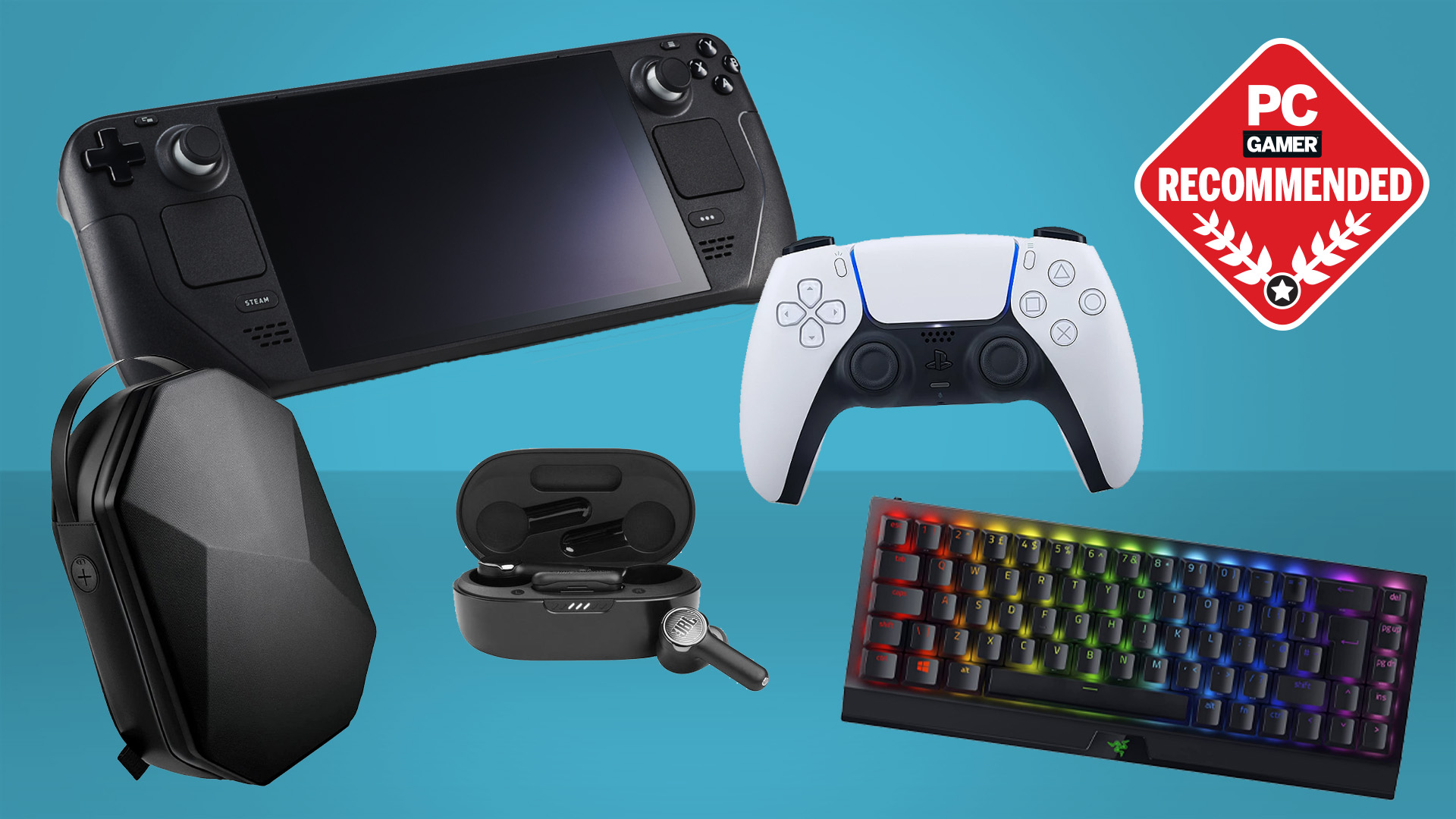Our Verdict
While the feedback from the T598's wheelbase and the quality of the pedal set is very good for the price, a toy-like wheel rim spoils the experience significantly. You could upgrade it to get the best of both worlds, but then you're well into the competitive mid-range sim setup market—which rather defeats the point, if you ask me.
For
- Good pedals
- Strong and detailed feedback
Against
- Plasticky wheel and shifter paddles
- Bulky wheelbase
- Questionable desk mounts
PC Gamer's got your back
When it comes to ultimate sim racing immersion, the tippity-top of racing wheel tech is widely considered to be direct drive. Attaching a wheel directly to a powerful electric motor results in instantaneous and highly-detailed feedback, the sort you'd receive if you really were at the helm of a fearsome, fire-breathing speed machine.
Trouble is, they're expensive. Thrustmaster, however, has been a name in the racing wheel space for some time, and is known for delivering belt and hybrid-drive offerings for very reasonable money. Now it's released the Thrustmaster T598, a direct drive racing wheel bundle with a few tricks up its sleeve—the first being the price.
For $499/£450, you get a direct drive wheelbase, a wheel rim, and an all-metal pedal set, which is downright astonishing for the cash. On paper, at least. Granted, it's not exactly money you might find down the back of the couch, but I was similarly astonished when I reviewed the Moza R5 bundle, which was then available for a very similar MSRP.
Its price has varied since, but it's still our top recommendation for the best budget direct drive racing wheel. An overbuilt, premium-feeling bit of kit, the little Moza has been my go-to sim racing companion ever since I first got my hands on it, so I was anxious to see what Thrustmaster was bringing to the party for similar cash.
Which brings me to the second trick in the T598's repertoire. While the Moza delivers a maximum of 5 Nm of torque to your fingertips, the T598 makes use of a direct axial drive motor to deliver what it describes as 5 Nm of torque with an overshoot capability of +100%.
In essence, it's able to boost the torque up to 10 Nm for brief moments—like simulating the sort of snap oversteer that attempts to wrench the wheel from your grip when you mess up a corner.
Axial flux direct drive motors have their magnets aligned in parallel with the axis of the wheel, as opposed to the radial flux motors used in other direct drive wheels, which have magnets mounted in parallel with the wheel shaft. Thrustmaster says that an axial flux motor is able to deliver more responsive feedback than traditional, radial flux motors, and eliminates "cogging."
This is a phenomenon whereby the magnets aligned with the internal stator in a regular radial flux motor can cause a jerky, uneven sensation in the wheel movement, particularly at low speeds. It's not something I've found particularly bothersome in direct drive wheels I've used to date, but hey, getting rid of it entirely sounds like a good thing to me.
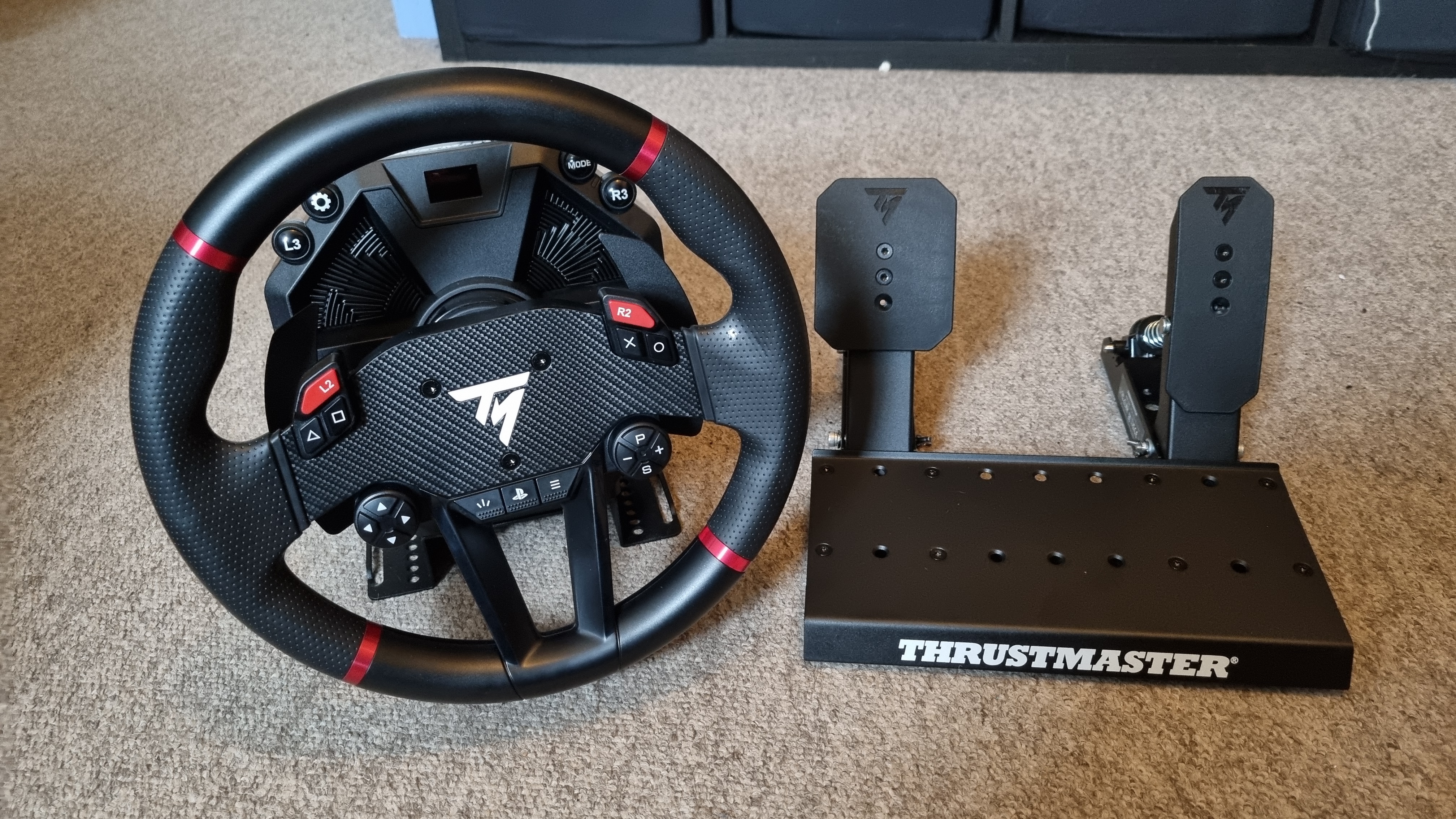
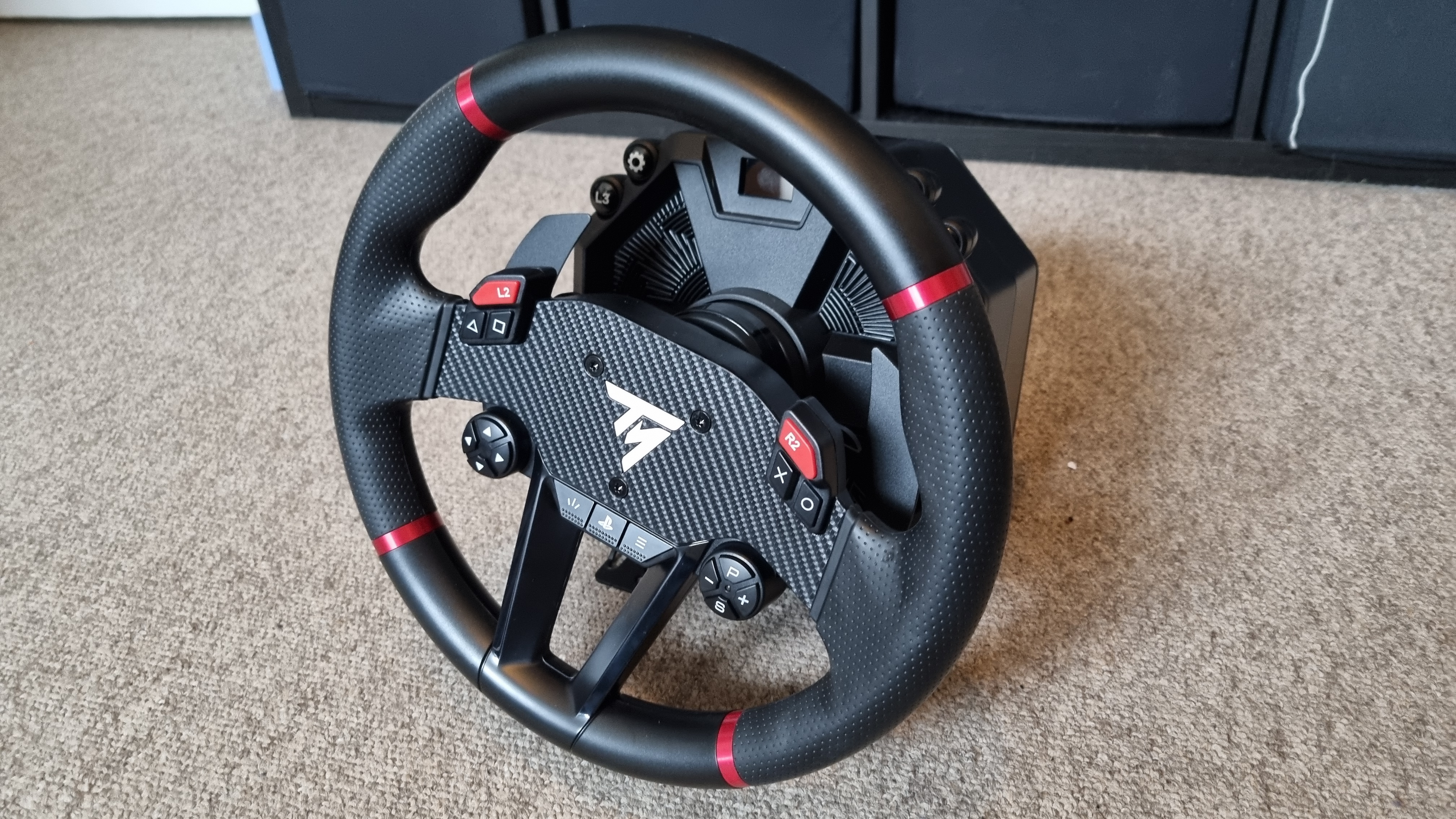
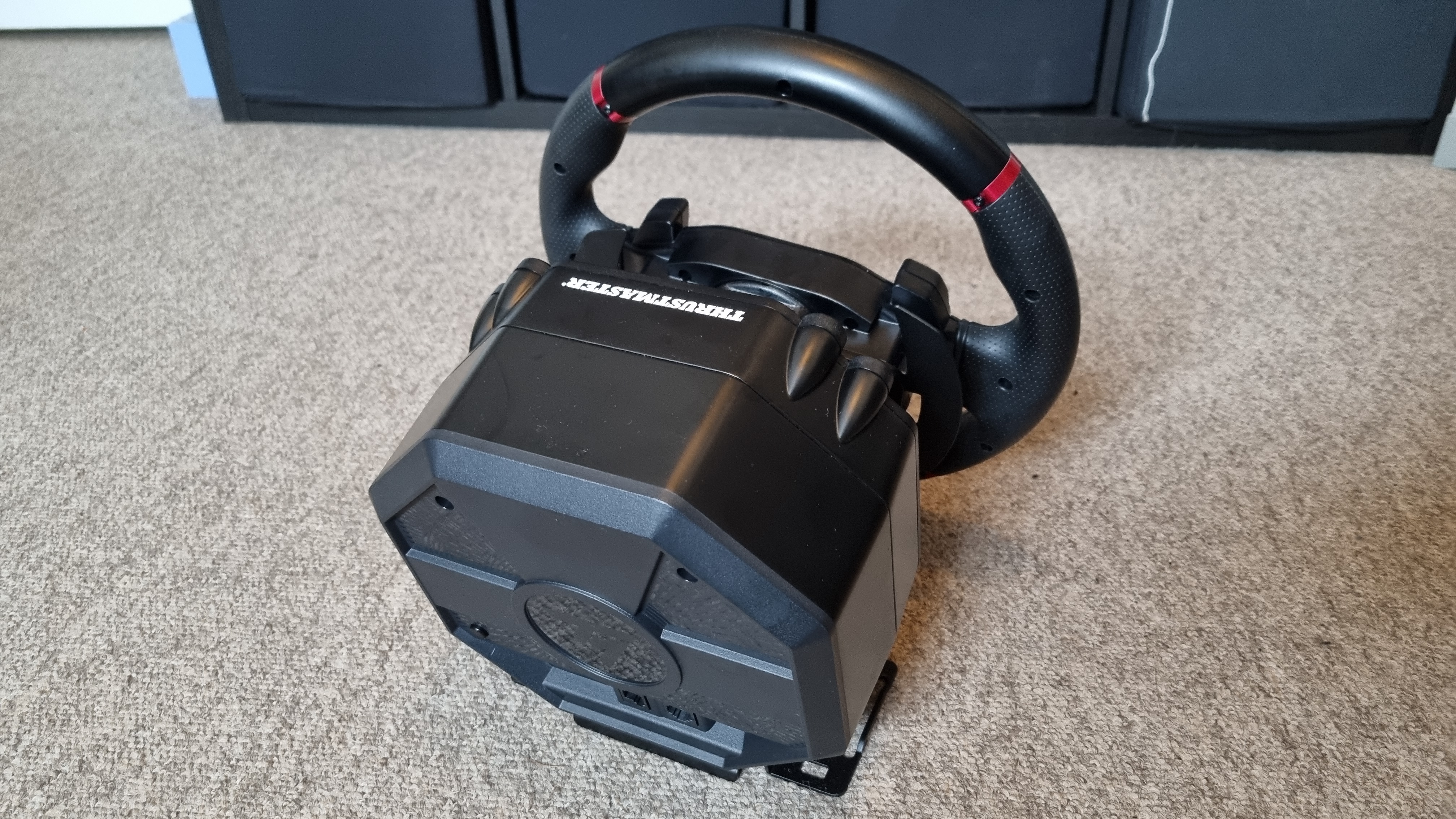
There are some downsides to this tech, however, and the main one is size. The T598's wheelbase unit is a seriously chonky affair, and makes for a desk-dominating addition to a regular setup. It's an unwieldy object, and one that I wouldn't be too keen to keep in place for any longer than I needed to as a result.
Included are two plastic desk clamps that slot into a screw-in lower metal frame, and I spent some time puzzling over the fitting instructions. Essentially, they're connected to the wheelbase primarily by the clamping force created when mounting them to the desk.
There's a plastic tab that slots into a corresponding hole in the base to let you know you've oriented them correctly, but it's not a confidence-inspiring thing to do when dealing with a unit of this size and weight.
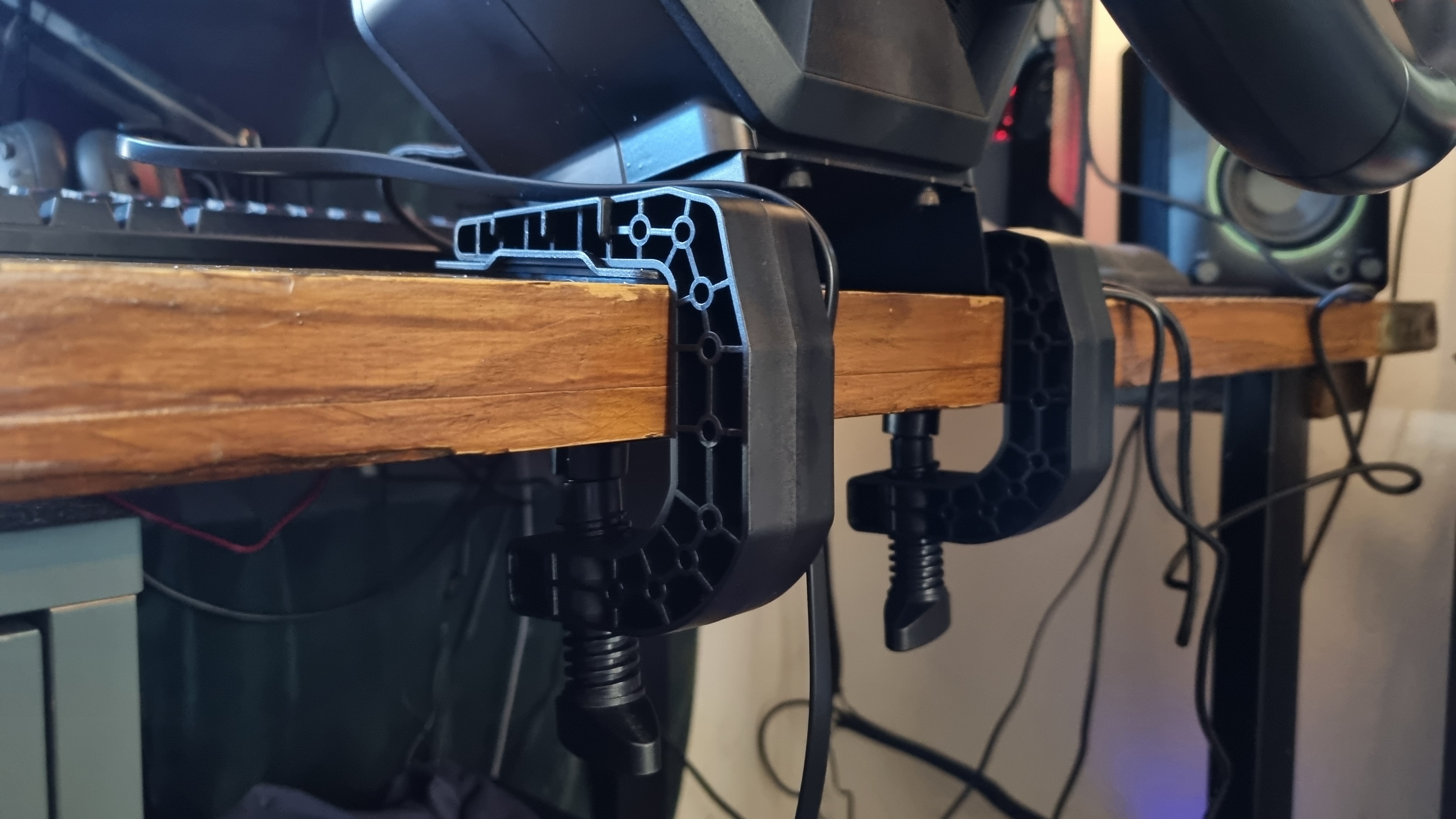
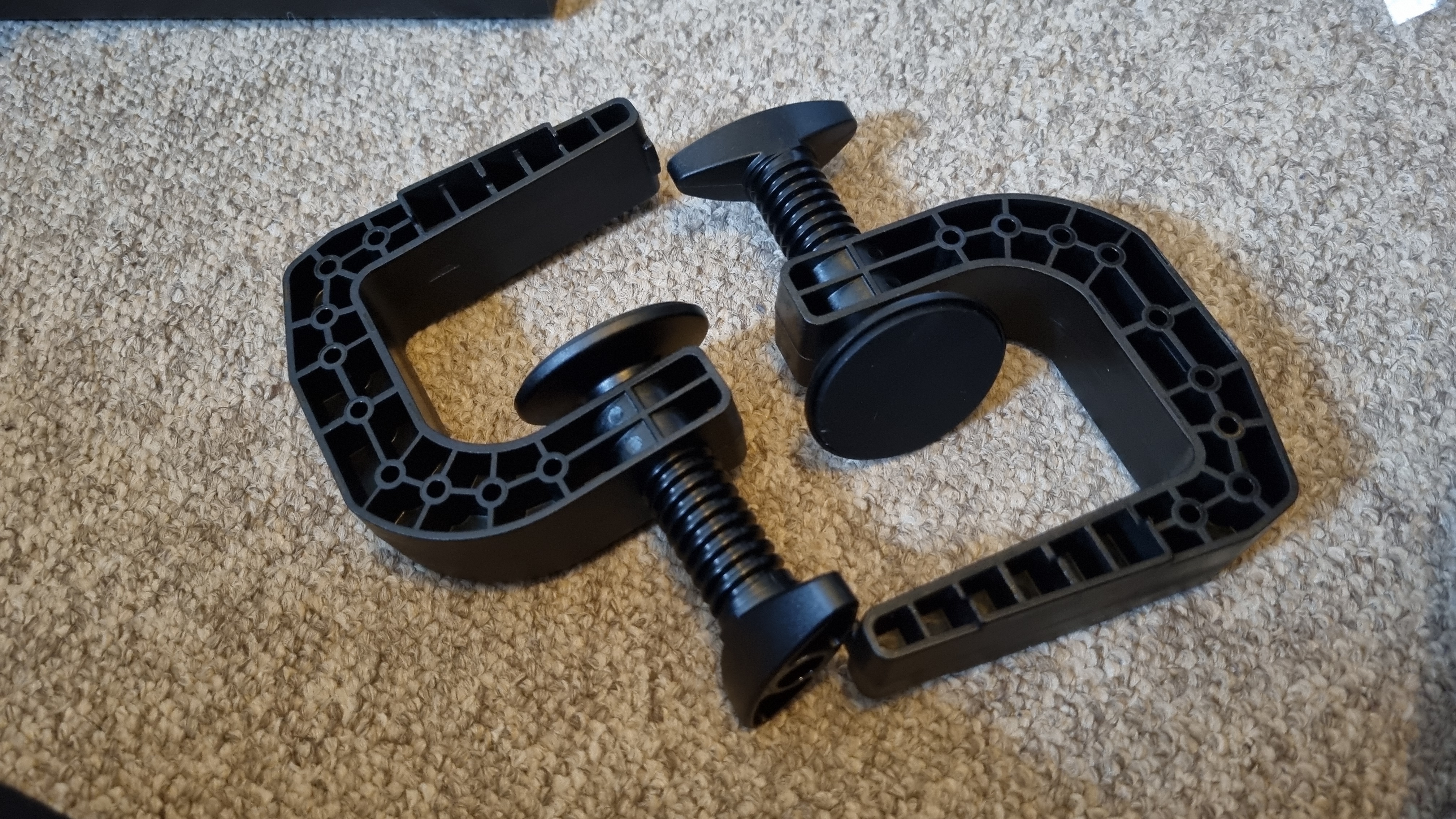
Once secured the mounts feel fairly robust, although I question the use of plastic-on-plastic in the construction. A plastic screw grinding in a plastic socket doesn't feel like the strongest or most high-quality mounting solution Thrustmaster could have come up with, and the fact the clamps don't secure to the base independently raises an eyebrow. Still, money has to be saved somewhere, I suppose.
Where it really shouldn't have been saved, however, is the wheel rim itself. While the rubber grips initially feel good, the wheel rim is hollow plastic—and significant sections of the outer diameter are left gripless, which reveals the tinny-feeling material underneath. The paddles are also plastic, with a slightly worrying amount of flex in the material, and the various buttons are of the thin and rattly variety.
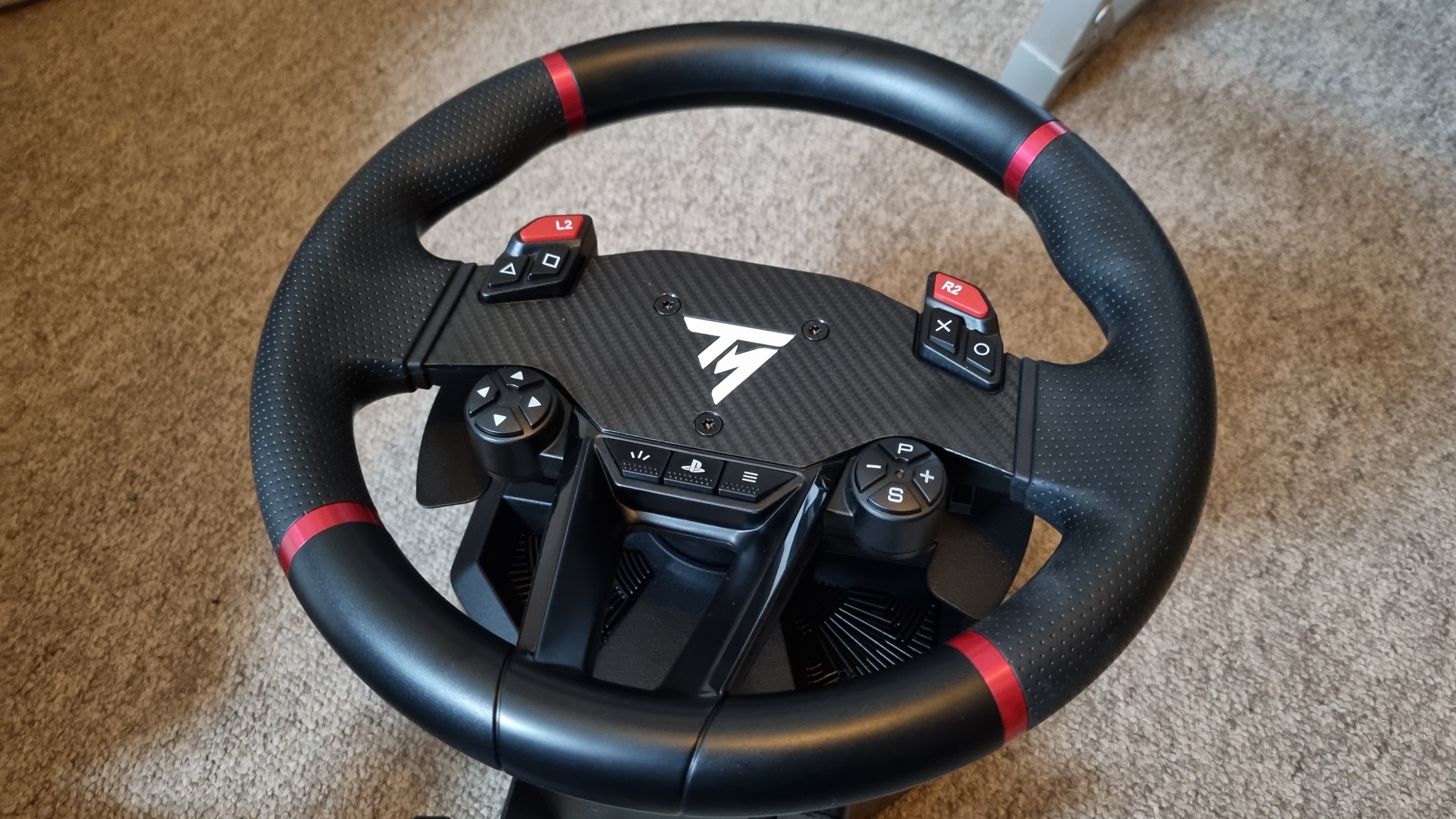
The T598's Raceline Pedal set is much better. It's an all-metal-construction, two pedal affair, with three adjustment notches and spare springs for tension and pedal feel.
While the brake pedal lacks a piston-like load cell solution, a polyurethane stopping ring is included (along with a firmer spring) that performs a decent impression of one, giving a solid amount of resistance to the travel and an obvious end point for brake-stamping moments.
A pet peeve of mine is an unsatisfying brake pedal, but the solid construction and adjustments on offer here makes the Thrustmaster's offering better than many other cheap units. There's no flex in the bottom plate, and a set of saw-toothed add-on grips gamely suggest that the pedals won't go backwards if you use them on a carpeted floor.
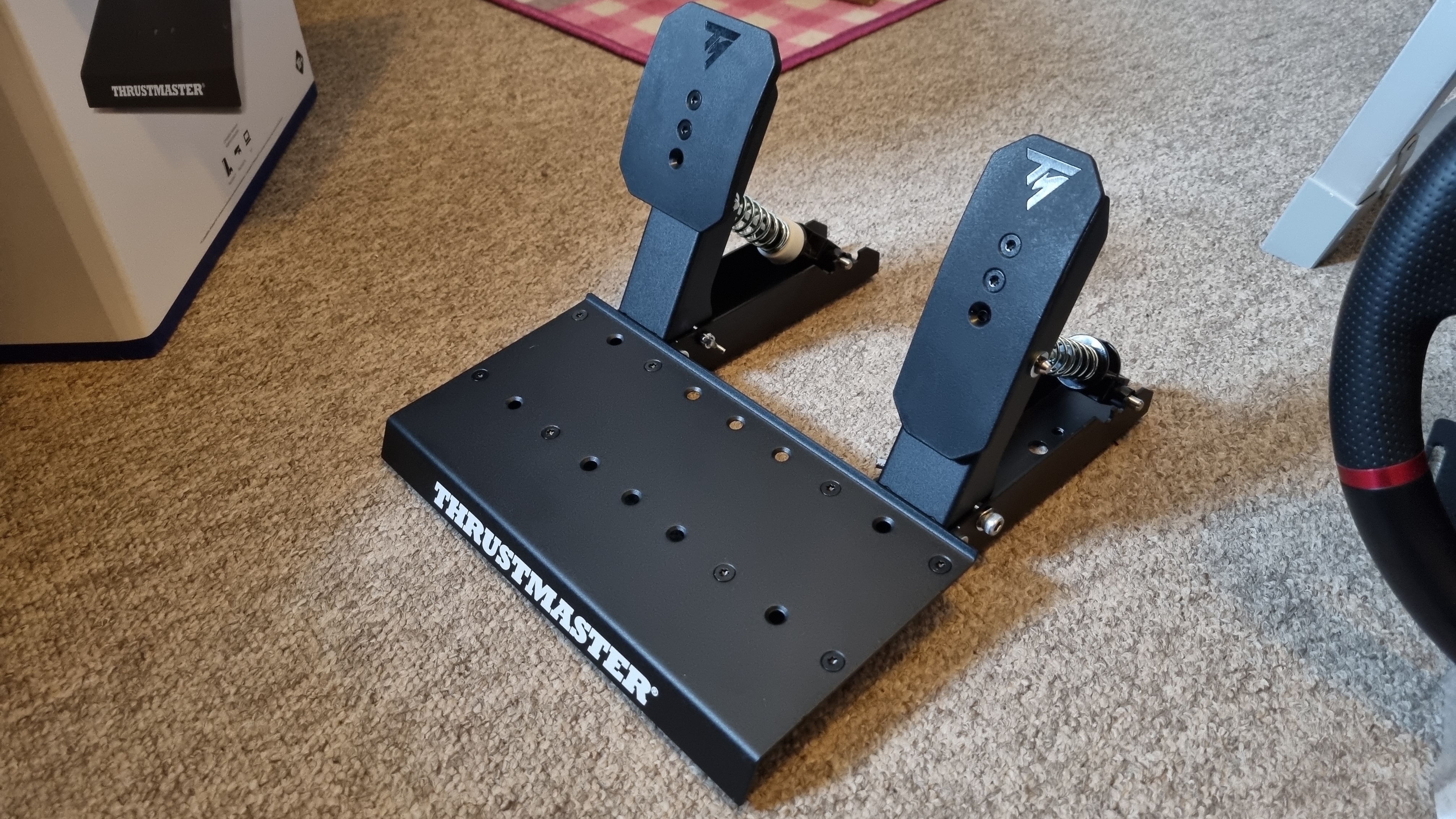

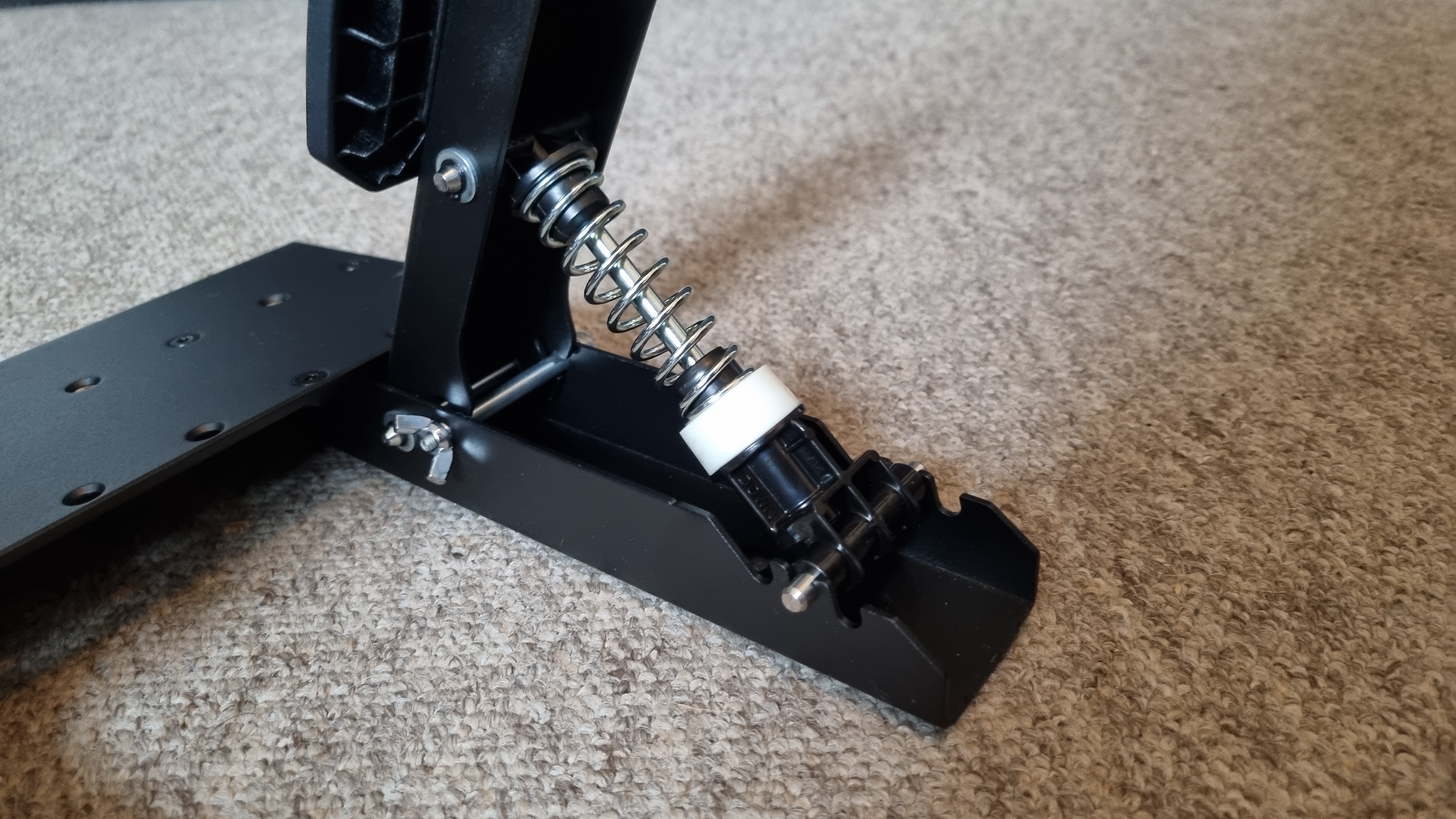
This doesn't really work out in practice, as I still find them travelling away from me in heated moments. I'd still suggest you wedge something behind the pedals if you're not attaching them to a sim rig, but it's a nice attempt to solve a universal problem, regardless.
So, to racing. The pedals attach to the T598 wheelbase with an included proprietary cable, the wheelbase connects to a PC with an included (and may I say, very high-quality) USB Type-A cable, and off to the virtual track we go. The whole kit and caboodle is controlled by My Thrustmaster Panel, which immediately recognises the wheel and updates the firmware automatically. Thanks, MTP.

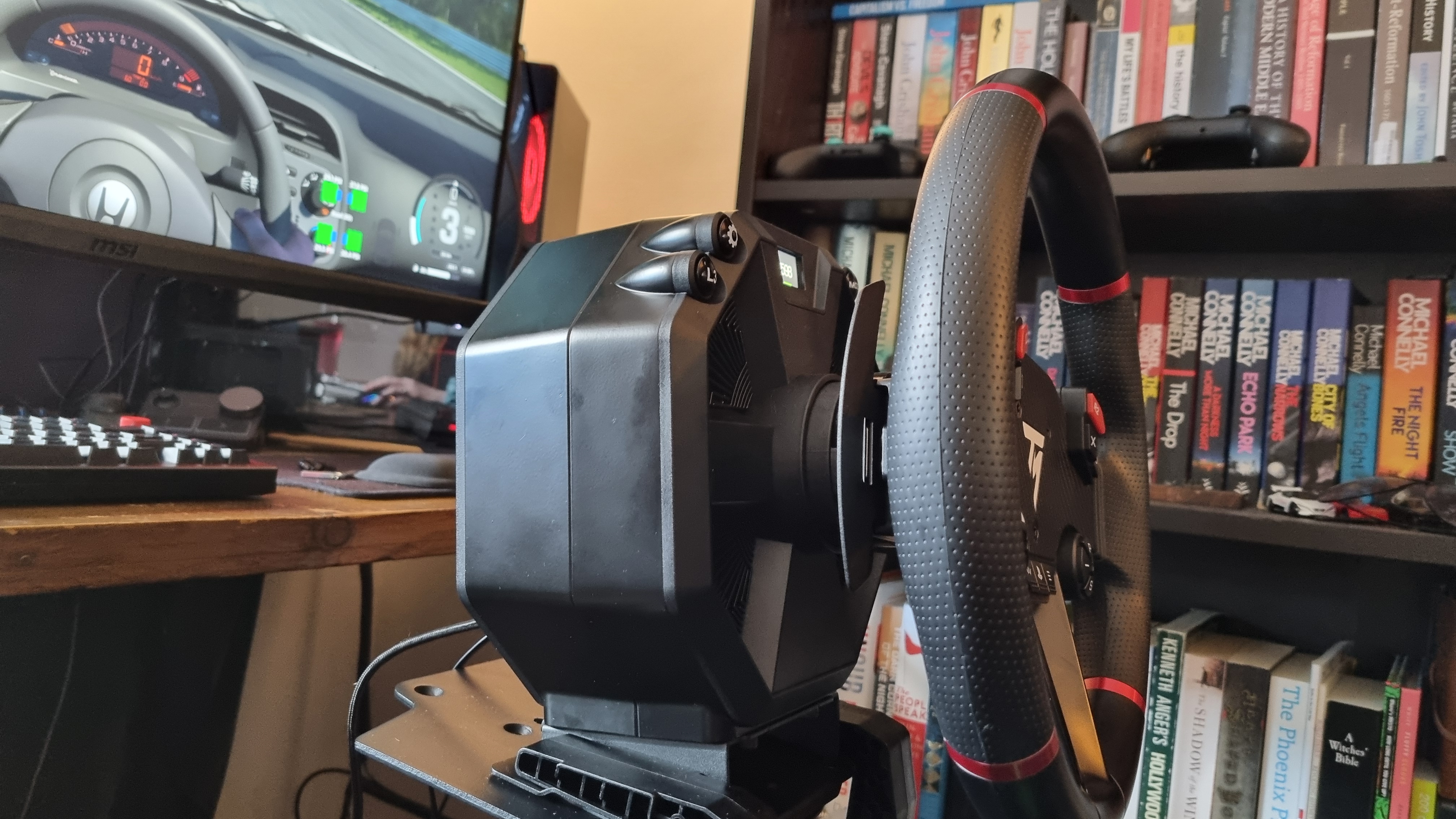
However, navigating to the main settings tab reveals a "coming soon" page. You can still check the inputs are working and the wheel is aligned correctly in a separate menu, but the placeholder page encourages you to use the onboard wheel settings menu to adjust the force feedback gain using the included display and wheel buttons.
Which is not a particularly intuitive process. Fiddly menus, thin plastic controls, and a tiny little screen with abbreviated menu titles combine to create a frustrating adjustment experience, although for what it's worth the wheel itself works fine with the default options out of the box.
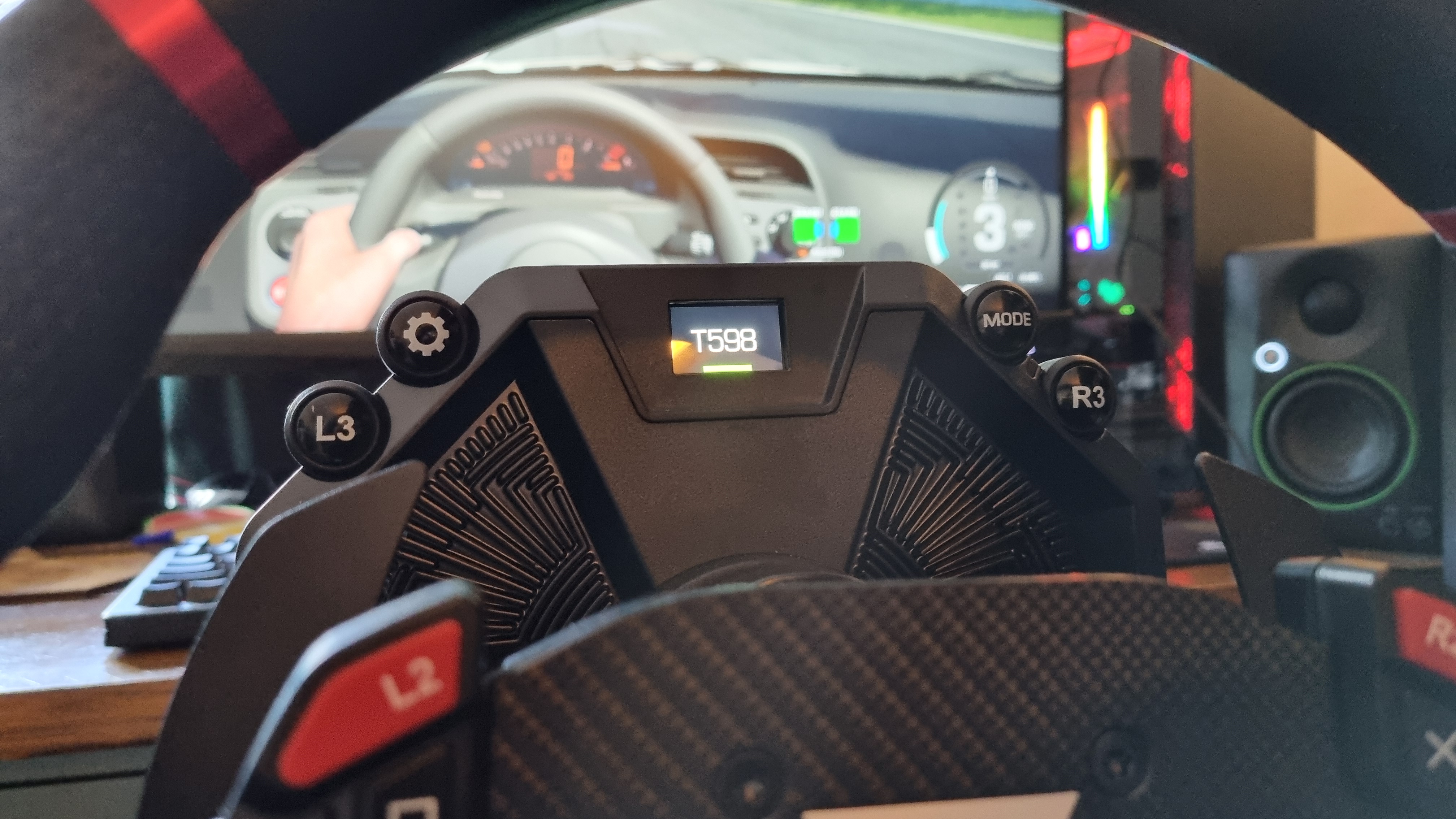
Whacking the feedback gain up to 100% and jumping into Assetto Corsa Evo, I have to say the axial drive motor on offer here really is capable of delivering a lot of detail. Kerbs rumble, track surfaces are communicated through your fingertips, and the difference between a good set of tires and a bad set is night and day. All as it should be.
And as for the 5 Nm's worth of overshoot? I'm not entirely sure I can feel it in action. The T598 is certainly capable of throwing you about, but I can't honestly say it feels any more powerful than the Moza, which is a bit of a disappointment given just how much extra desk space is taken up by the Thrustmaster's huge electric motor.
I can't really recommend the T598 bundle without also recommending you swap out the wheel, which increases the price significantly
That being said, when it comes to feel I'd say it's equivalent. By which I mean, pretty fantastic. It does an excellent job of conveying what the front tires are doing at all times, along with that spooky, direct drive-enhanced sensation that your rear wheels are ever-present behind you, even though they exist purely in the virtual ether.
The whole experience is spoiled, however, by that cheap-feeling wheel rim. Keeping my hands in the ten and two o'clock positions means I'm in rubber grip territory, which feels decent. Move a hand up into the middle or bottom of the wheel and suddenly I find myself in hollow plastic land, complete with screw holes on the back of the rim I can feel with my fingertips.
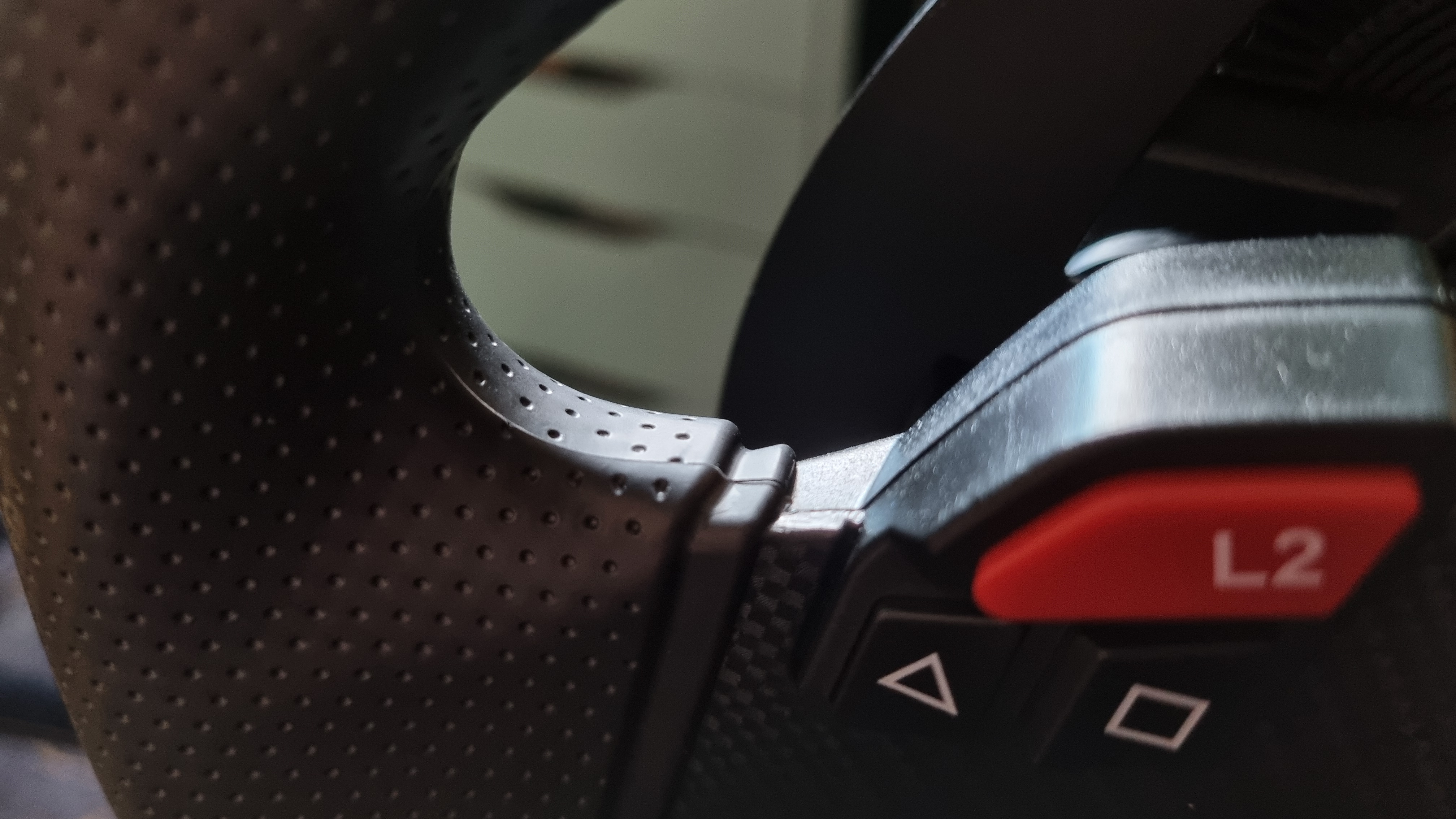
Worse than that, there's a seam running around the inside of the rim which ranges in feel from distracting, to downright palm-chafing. Two pieces of plastic meet right in the spot where your thumb and forefinger rest, which left me with sore hands and visible marks after a few hours' use.
✅ You want detailed feedback: The T598 is capable of delivering plenty of giggle-inducing grunt, but it doesn't skimp on the small details. Be prepared to get intimate with every kerb.
✅ You want a good pedal set: The all-metal-construction pedals are a highlight, and much better than the price suggests.
❌ You're not planning on upgrading the wheel rim in future: I'd swap the included rim out for something nicer at the earliest opportunity. It really doesn't feel like the same quality as other parts of the bundle.
❌ You want something desk-friendly: The direct axial motor might deliver plenty of detailed feedback, but it's also a large and unwieldy beast—and the all-plastic desk clamps don't inspire confidence.
Those plastic shifter paddles aren't wonderful, either. Serviceable, sure, but I can't help but feel you should get more for your money than this, even if it is a "budget" product.
The wheel rim just isn't satisfying to use, and lets the entire experience down. If you're buying a direct drive setup, you're spending a significant amount of cash on a motor system that delivers the maximum amount of immersion.
Experiencing that immersion through a cheap-feeling wheel rim is a bit like eating a steak with plastic cutlery—the base experience is roughly the same, but you know it'd be so much better with a higher-quality set of, err, utensils.
Of course, Thrustmaster will sell you different wheel rims to fit on the direct axial drive base, ranging from Ferrari-tie-in F1 style models to more traditional fare. But the point is, you're paying for a sim racing-ready direct drive bundle, and with this wheel attached to it, I don't think it is.
Which leaves this review in an awkward position. While the base and the pedals are fantastic for the cash, I can't really recommend the T598 bundle without also recommending you swap out the wheel, which increases the price significantly. Whereas budget offerings from Moza and Fantatec feel like the whole package, wheel and all, straight out of the box.
Alright, you'll probably want to spend a little extra cash on a proper brake load cell kit, as budget direct drive wheel bundles still leave them out of the package, for reasons that remain unclear.
That's it, though. Job done, a-sim-racing you shall go. Which, now I've finished writing this review, I'm going to be doing this weekend. But with the Moza, and a wheel that feels worthy of a fully-fledged racing machine.
While the feedback from the T598's wheelbase and the quality of the pedal set is very good for the price, a toy-like wheel rim spoils the experience significantly. You could upgrade it to get the best of both worlds, but then you're well into the competitive mid-range sim setup market—which rather defeats the point, if you ask me.

Andy built his first gaming PC at the tender age of 12, when IDE cables were a thing and high resolution wasn't—and he hasn't stopped since. Now working as a hardware writer for PC Gamer, Andy's been jumping around the world attending product launches and trade shows, all the while reviewing every bit of PC hardware he can get his hands on. You name it, if it's interesting hardware he'll write words about it, with opinions and everything.
You must confirm your public display name before commenting
Please logout and then login again, you will then be prompted to enter your display name.

